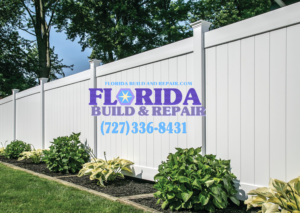How does the type of soil affect fence installation costs in Largo
The type of soil on your property can significantly impact the cost of fence installation in Largo. Different soil types present unique challenges and benefits that affect labor costs, material usage, and overall project complexity. Here’s how various soil types influence fence installation costs:
Impact of Soil Types on Fence Installation Costs
1. Sandy Soil
- Easy to Dig: Sandy soil is generally easy to work with, as it allows for quick hole digging.
- Potential for Collapse: However, sandy soil can collapse around the edges of holes, requiring larger holes or moistening the soil to stabilize it. This can add to labor costs if not managed properly.
- Additional Materials: More concrete may be needed to ensure stability, increasing material costs.
2. Clay Soil
- Difficult to Dig: Clay soils are dense and hard to dig, especially when dry, which increases labor costs due to the time and effort required.
- Shrinkage Issues: Clay soils shrink when they dry, potentially affecting fence stability and appearance. This might necessitate additional measures to ensure the fence remains secure.
- Stability: Once installed, clay provides strong support for fence posts, reducing the need for additional reinforcement.
3. Loamy Soil
- Easy to Work With: Loamy soils are stable and easy to dig, making them ideal for fence installation with minimal additional costs.
- Softness: While loamy soil is generally supportive, its softness may require slightly larger footings or more concrete to ensure stability.
4. Rocky or Gravelly Soil
- Difficulty in Digging: Rocky or gravelly soils are challenging to dig through, increasing labor costs due to the time and effort needed to navigate solid obstacles.
- Stability: Once installed, these soils provide excellent stability for fence posts, potentially reducing long-term maintenance costs.
5. Silt and Peat Soils
- Easy to Dig: Silt soils are easy to work with but can become fluid when saturated, affecting fence stability.
- Peat Soils: Peat soils offer little support and may require additional reinforcement or specialized installation techniques, increasing costs.
Cost Considerations
- Labor Costs: Difficult soil conditions like clay or rocky soils increase labor costs due to the time and effort required for digging and installation.
- Material Costs: Additional materials such as concrete or specialized footings may be needed for soils like sand or silt to ensure stability.
- Preparation Costs: In some cases, site preparation (e.g., removing rocks or leveling ground) may be necessary, adding to overall costs.
By understanding these factors, homeowners can better anticipate and manage the costs associated with fence installation in Largo based on their soil type.

How does the type of soil affect fence installation costs in Largo
The type of soil on your property can significantly impact the cost of fence installation in Largo. Different soil types present unique challenges and benefits

How do gates and hardware impact the overall cost of a fence in Largo
Gates and hardware can significantly impact the overall cost of a fence in Largo, contributing to both the aesthetic appeal and functional aspects of the

What are the hidden costs of DIY fence installation in Largo
When considering DIY fence installation in Largo, several hidden costs can arise that may not be immediately apparent. Here are some of the most common

DIY Fence Installation vs. Hiring a Pro: Cost Comparison in Largo
When comparing the costs of DIY fence installation in Largo versus hiring a professional, several factors come into play. Here’s a breakdown of the typical

Fence Installation Costs in Largo
Fence Installation Costs in Largo, FL: 2025 Comprehensive Guide As of 2025, Largo homeowners considering fence installation are looking at costs ranging from $1,093 to

Vinyl Privacy Fence Costs in Largo
Vinyl privacy fences typically cost between $25 and $60 per linear foot installed, with the average cost ranging from $40 to $60 per linear foot


